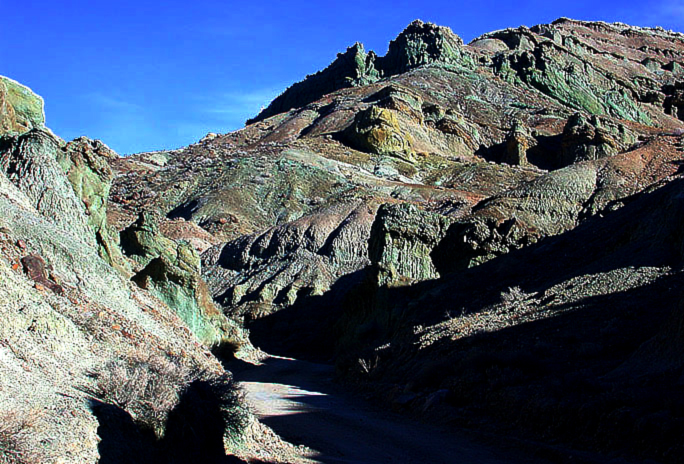| A dramatic, cathedral-like buttress of massive
river and stream-deposited sandstones, topped by white volcanic
tuff, along the one-way loop trail, in the Middle Member of the
middle Miocene Barstow Formation. Fossil bones are not as abundant
here as in the overlying, and hence younger, Upper Member of
the Barstow, yet persistent paleontologists have identified several
productive bone-bearing layers within the middle sequence--in
addition to localities that yield petrified woods, diatoms (an
aquatic single-celled plant), and fresh water mollusks. |










